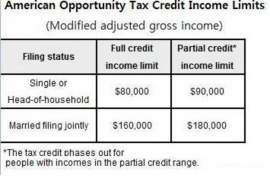
EIN

Using an Employer Identification Number (EIN)
An Employer Identification Number (EIN) is used as a way to identify and individual or company who needs to pay withholding taxes on employees.
A EIN is also known as a
· Federal Tax Identification number
· Tax Identification number (TIN)
· Federal Employer Identification number (FEIN)
An EIN is a nine digit number written in form XX-XXXXXXX that is unique to a particular employer and is assigned by the Internal Revenue Service for identification purposes.
The two digit prefix of an EIN number indicates which campus assigned the EIN number. Before 2001, the two digit prefix indicated the geographic area of the business. However, this is no longer applicable.
EINs are used by sole employers, corporations, government agencies, sole proprietors, partnerships, trusts, non-profit organizations, estates of decedents, certain individuals without employers, and other business entities. Each of these only requires one FEIN number
An employer needs a EIN if an employer:
· Has employees
· Is involved in trusts, estates, non-profit organizations, real estate mortgages investment conduits, plan administrators, or farmers’ cooperatives
· Runs the business as a partnership or corporation
· Has a Keogh plan
· Files Excise, Employment, or Alcohol, Tobacco, and Firearms tax returns
· Withholds taxes other than wages on a non-resident alien employee
If the employer does at least one of these things, a FEIN is required.
Applying for an EIN
A EIN can obtain by completing an application either online, through a toll-free telephone service, through fax or by mail with From SS-4. The internet application is the preferred method for EIN application by customers. Once completed, the FEIN is issued immediately. However, an immediate EIN number can also be received through by phone from 7AM to 10PM local time during the weekdays. Applying by fax takes up to four business days while a mail application takes up to one month.
In certain circumstances, a business may need a new EIN. Generally this is due to any sort of structure change or just a change in ownership. Some changes that require EIN changes include:
For Sole Proprietors
· Being subject to a bankruptcy proceeding
· Taking in partners and becoming a partnership
· Incorporating
· Purchasing or inheriting an existing business that will be operated as a sole proprietorship
For Corporations
· Receiving a new charter from the secretary of state
· Being or becoming a subsidiary of a corporation using a parent’s EIN
· Changing to a sole proprietorship or partnership
· Creating a new corporation after a statutory merger
For Partnerships
· Partnership becoming a sole proprietorship
· Incorporating
· Ending an old partnership and beginning a new partnership
Avoiding Common FEIN Problems
Many of the common problems involving an EIN are experienced by incorrectly filling out paperwork. In order to prevent this, remember to:
· Always include a EIN, SSN, or ITIN on Form SS-4
· Use a full legal name on Form SS-4 as well as the EIN provided consistently
· Inform the IRS of business name changes
· If the company uses a P.O. Box, use that instead of the physical address as the mailing address


















